20+ Sample Value Chain Analysis
-

Data Collection for Value Chain Analysis Example
download now -

Value Chain Analysis for the Three Industry Sectors
download now -
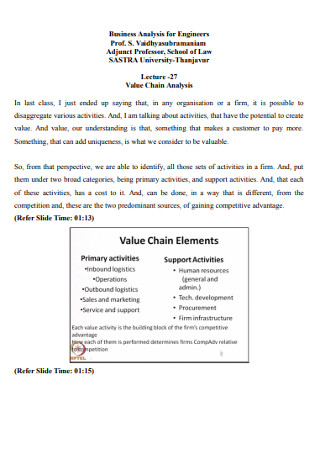
Business Value Chain Analysis Template
download now -
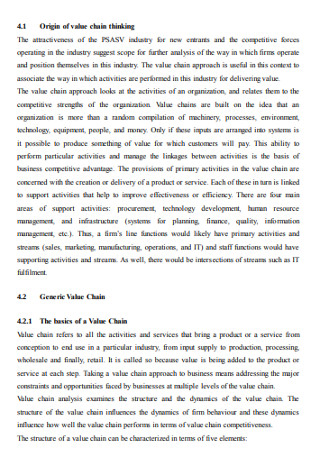
Origin of Value Chain Analysis
download now -
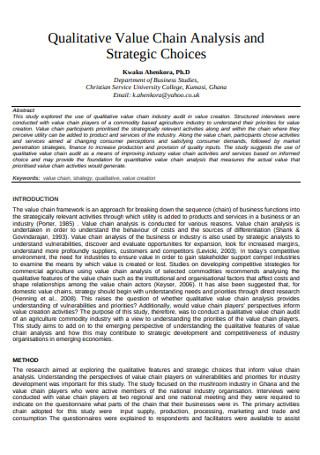
Qualitative Value Chain Analysis Template
download now -
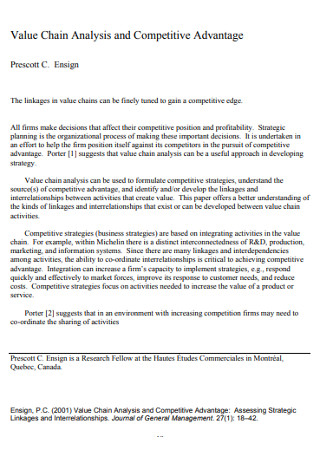
Value Chain Analysis and Competitive Advantage Template
download now -
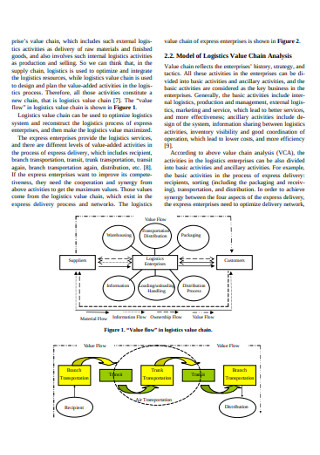
Model of Logistics Value Chain Analysis
download now -

Study on Value Chain Analysis Template
download now -

Projects Value Chain Analysis Example
download now -

Sustainable Value Chain Analysis Templates
download now -

Basic Value Chain Analysis Template
download now -
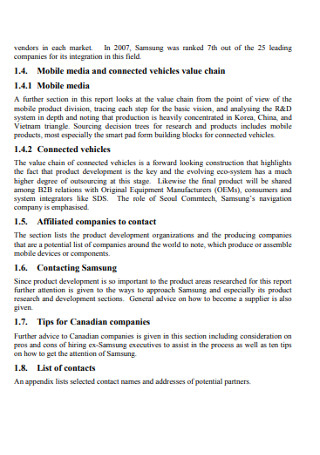
Global Value Chain Analysis Template
download now -
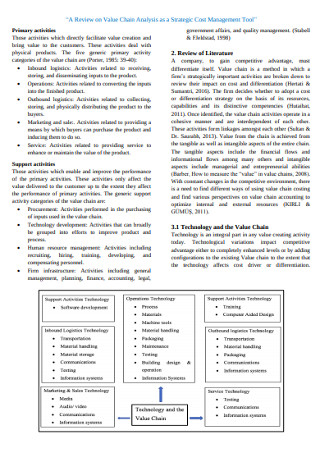
Cost Value Management Chain Analysis Template
download now -
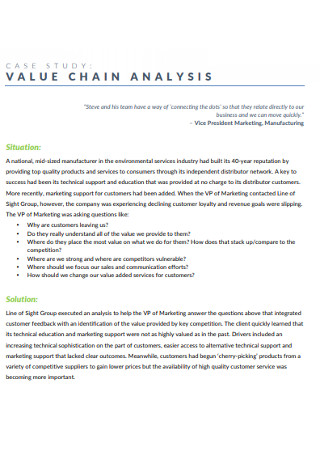
Case Study Value Chain Analysis Template
download now -
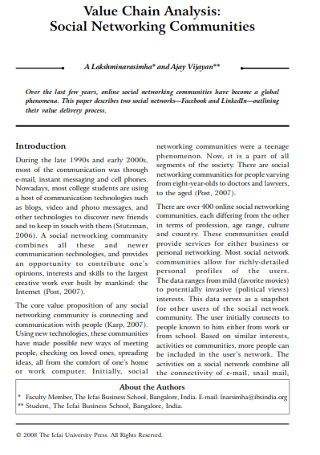
Social Value Chain Analysis Template
download now -
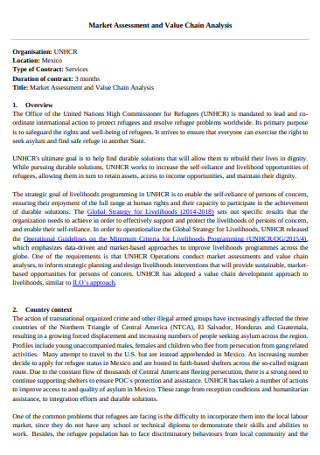
Market Assessment and Value Chain Analysis
download now -

Producer-led Value Vhain Analysis Template
download now -
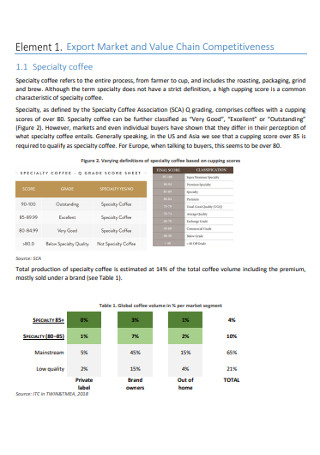
Export Market and Value Chain Analysis Template
download now -
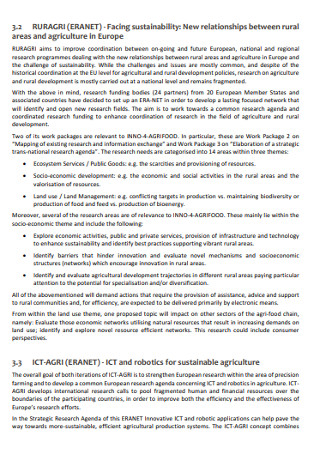
Agri-food Value Chain Analysis
download now -
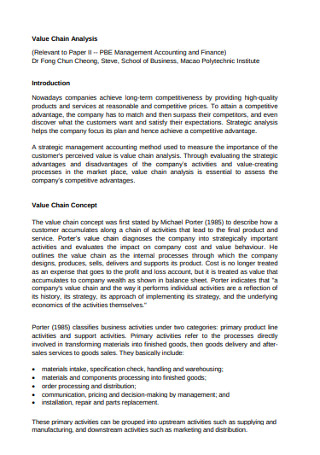
Standard Value Chain Analysis
download now -

Formal Value Chain Analysis
download now
FREE Value Chain Analysis s to Download
20+ Sample Value Chain Analysis
What Is Value Chain Analysis?
The Value Chain Primary and Support Activities
The Two Types of Competitive Advantages
How to Perfect a Value Chain Analysis
FAQs
What are the three most important steps to perform value chain analysis?
What is the value chain of Coca-Cola?
What are the types of value chain governance?
What Is Value Chain Analysis?
Value chain analysis (VCA) is a systematic process coined by Michael Porter’s value chain model back in 1985. And VCA is what any firm can use to determine their primary and support activities until an analysis report follows on how the value of such factors actually helps lessen costs, boost differentiation, or generate profits. Expect value chain analysis to be a visual representation of the different activities done in business from start till the end until organizations learn their competitive advantages.
Why Is Value Chain Analysis Important?
Indeed, value chain analysis aims to define every activity done in business and to analyze their value. But why is it necessary in the first place? Here are some examples that prove just how important value chain analysis is:
Basis for Making Money
Value chain analysis has helped a number of companies in terms of making money. Through analyzing the different systems and subsystems in a value chain for making certain goods and services, you will understand how money plays out in business. Examples include how to reduce operational expenses and boost profits. And the best part is it can apply to any industry whether you work in a restaurant, bank, insurance company, hotel, hospital, IT service, construction, or even manufacturing.
Reevaluates Business Activities
Defining every activity in business is just the initial step of how value chain analysis works. Because analyzing each activity is where you learn which specific activity is giving more value to your business and which ones run the opposite. So if ever there is a certain activity that is not helping your business in terms of profit, production, and efficiency, then it might as well be replaced with more valuable activities.
Sorts Priorities
Another beneficial aspect of VCA is how it helps you know which business activities to prioritize. If one primary activity is your firm’s absolute source of cost advantage, then you would make sure to prioritize and maintain doing that. And for the challenging activities, your goal is to create an improvement plan so that such challenges turn out as a competitive advantage in the long run.
Balanced Analysis
Value chain analysis actually a balanced analysis because it helps you look at both the competitive advantages and disadvantages of your organization. Indeed, learning about the pros of your firm is worth being proud of but the cons must also be acknowledged to know how to transform those weaknesses into strengths. Just like SWOT analysis, there should be balance in recognizing both the good and the bad in a firm.
Competitive Operational Efficiency
One element to raise that competitive edge in your organization is to boost operational efficiency. And that is just what value chain analysis can do for you because the prioritized goals you learned that will bring you an advantage from competitors help you know how to become more effective and efficient with those valuable assets. So you can expect great development as you complete VCA since you get work on your competitive edge further.
The Value Chain Primary and Support Activities
Value chain analysis contains a series of primary and support activities for you to analyze the different business procedures and systems. But what exactly are they? In this segment, you will learn about the two significant activities in the value chain and what each type contains:
Primary Activities
Support Activities
The Two Types of Competitive Advantages
Indeed, it is through value chain analysis that you can experience the desired competitive advantages for your enterprise. But when it comes to being advantageous, it is necessary that you understand the difference between the two types of competitive advantages. And these two are:
Cost Advantage
Cost advantage refers to the strategy where your business spends the lowest possible costs but still remains profitable. But it does not mean that spending low costs are the only big deal because maybe the operational inefficiency and poor quality outcomes were measured. Cost analysis is a big deal here and a good example of displaying cost advantage is when you opt for low-cost resources and raw materials so that the products you sell cost low, which would be good news for consumers.
Differentiation Advantage
Besides going for the business that offers the cheapest products, you may also go for the business that offers the most advanced and specialized goods for competitive advantage. And this is called a differentiation advantage. In this situation, your organization is more focused on delivering top-quality products and services despite having high costs. But, just make sure the costs are worth it, meaning your company delivers unique and premium goods to get that edge in competition.
How to Perfect a Value Chain Analysis
With a clear understanding of the definition, importance, types, and activities of value chain analysis, conducting the analysis itself will run seamlessly for you. Now for the main course, here are the steps you need to perfect the value chain analysis process:
-
Step 1: Optimize a Sample Value Chain Analysis Template
You would be surprised at how easy value chain analysis is when you have a sample template as your guide in doing the process. From the many value chain analysis samples enlisted above, you can opt for a value chain analysis in strategic management, value chain analysis in earned value management, value chain analysis in manufacturing, and other examples. More so, each template is customizable. So you are free to format and alter it however you want. Edit it according to your preferences now!
-
Step 2: Set Your Business Primary and Support Activities
You already know that figuring out the different primary and support activities of your organization is crucial to work on value chain analysis. This section is expected to record how products and services are developed, what procedures are involved in transforming raw materials to finished goods, and more. There may be some activities at work that you underlooked but are actually very valuable once analyzed in the long run. So review these activities seriously so you will get the right set of data.
-
Step 3: Analyze the Value and Costs Involved per Activity
Brainstorming and analyzing the primary and support activities will be a standard in value chain analysis. For example, ask how an activity actually gives value to clients or the company in general. Then, conduct an evaluation of whether the activities mentioned are actually helping you get to the competitive advantage you need, whether it is for cost or differentiation advantage. If they support your goal along, then you know you are doing right. If not, then this is the part to determine areas for improvement.
-
Step 4: Work on Opportunities that Promote Competitive Advantage
Now that you have performed the value chain analysis steps, what’s next? Decide what’s best for the business. As you complete the value chain analysis, stakeholders would want to check the executive summary of your company’s achievements and areas that need improvement. Make it as if you are writing a formal report on how to begin the improvement plan, how changes can impact results, and what sort of challenges would be met along the way. Then, make certain adjustments on how the business can provide the best activities that are valuable to customers and the organization’s profit margins.
FAQs
What are the three most important steps to perform value chain analysis?
To perform value chain analysis, you need (1) to determine the functions and types of businesses in the value chain, (2) to analyze their structural connections, and (3) to analyze their dynamics.
What is the value chain of Coca-Cola?
Coca-Cola’s value chain is more focused on bottling partnership and distributorship. The bottling partners handle the manufacturing, packaging, merchandising, and distributing process until they are directed to the consumers or vending partners.
What are the types of value chain governance?
Value chain governance consists of market, modular, relational, captive, and hierarchy.
Value chain analysis is your best strategic plan to recognize the different areas of improvement and specific activities that are valuable to your clients and business in general. Thus, VCA is a step closer to growing your business from increasing production, profits, and competitive advantage. Wait no further in experiencing VCA’s benefits by downloading a sample value chain analysis template now!
